Chempedak
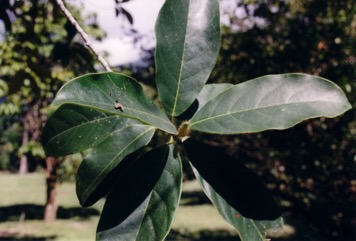
It is a tropical plant. It suits hot, wet tropical lowlands. It needs year round moisture. It grows in the high forest in Malaysia from sea level to 1300 m altitude. In XTBG Yunnan. It suits hardiness zones 11-12.
Also known as:
Bangkong, Banturung manuk, Baroh, Beluno, Bukoh, Campedek, Cempedak, Champada, Chubadak, Kakan, Mangkahai, Nakan, Nangka berit, Nangka tjomedak, Pohon cempedak, Pulutan, Sempedak, Sachram, Sonekadot, Temedak, Tibadak, Tibudak
Synonyms
- Artocarpus champeden (Lour.) Stokes
- Artocarpus hirsutissima Kurz.
- Artocarpus integer var. silvestris Corner
- Artocarpus integrifolius L. f., nom. illeg.
- Artocarpus jaca Lam.
- Artocarpus macrocarpon (Thunb.) Dancer
- Artocarpus polyphema Pers.
- Polyphema champeden Lour.
- Radermachia integra Thunb.
- Saccus arboreus minor Rumph.
- Sitodium macrocarpon Thunb.
Edible Portion
- Fruit, Seeds, Leaves, Vegetable
Where does Chempedak grow?
Found in: Asia, Australia, Brazil, Brunei, China, Cuba, Guam, India, Indochina, Indonesia, Malaysia, Mexico, Myanmar, Nepal, Pacific, Papua, Philippines, SE Asia, Singapore, South America, Thailand
Notes: There are about 50 Artocarpus species. They are in the tropics and subtropics of Asia and the Pacific.
Status: It is popular and sold in local markets in season.
Growing Chempedak
Cultivation: Seed remain viable for several weeks. Plants are often grown from seed. The can be grown by budding or grafting. Light shade is essential. A spacing of 12-14 m is suitable.
Edible Uses: The flesh is eaten raw or fried together with the seed. It is also used for pickles. Young fruit are eaten as a vegetable. They can be added to soups. The ripe seeds are boiled or roasted and eaten. The young leaves are eaten.
Production: Growth is slow. Trees produce fruit after 5 years from germination. A tree can produce 100 fruit each year. Fruit may weigh 25 kg.
Nutrition Info
per 100g edible portion| Edible Part | Energy (kcal) | Protein (g) | Iron (mg) | Vitamin A (ug) | Vitamin c (mg) | Zinc (mg) | % Water |
|---|---|---|---|---|---|---|---|
| Fruit | 117 | 2.5 | 1.1 | - | 17.7 | - | 66.7 |
| Leaves | - | - | - | - | - | - | |
| Seeds | - | - | - | - | - | - |
Chempedak Photos

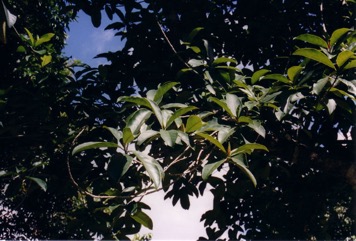
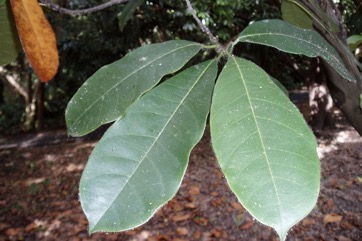
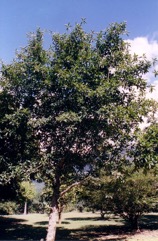
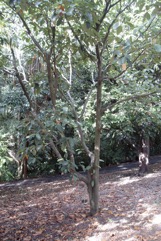
References
AAK, 1980, Bertanam Pohon Buah-buahan. Penerbitan Yayasan Kanisius, Jogyakarta. p 75
Argent, G et al, nd, Manual of the Larger and More important non Dipterocarp Trees of Central Kalimantan Indonesia. Volume 2 Forest Research Institute, Samarinda, Indonesia. p 434
Arora, R. K., 2014, Diversity in Underutilized Plant Species - An Asia-Pacific Perspective. Bioversity International. p 58
Barrau, J., 1979, Breadfruit and relatives, in Simmonds N.W.,(ed), Crop Plant Evolution. Longmans. London. p 201
Bircher, A. G. & Bircher, W. H., 2000, Encyclopedia of Fruit Trees and Edible Flowering Plants in Egypt and the Subtropics. AUC Press. p 43 (As Artocarpus champeden)
Burkill, I.H., 1966, A Dictionary of the Economic Products of the Malay Peninsula. Ministry of Agriculture and Cooperatives, Kuala Lumpur, Malaysia. Vol 1 (A-H) p 251 (As Artocarpus champeden)
Chai, P. P. K. (Ed), et al, 2000, A checklist of Flora, Fauna, Food and Medicinal Plants. Lanjak Entimau Wildlife Sanctuary, Sarawak. Forestry Malaysia & ITTO. p 168
Chin, H.F., & Yong, H.S., 1996, Malaysian Fruits in Colour. Tropical press, Kuala Lumpur p 27
Coronel, R.E., 1982, Fruit Collections in the Philippines. IBPGR Newsletter p 6 (As Artocarpus champeden)
Dangol, D. R. et al, 2017, Wild Edible Plants in Nepal. Proceedings of 2nd National Workshop on CUAOGR, 2017.
Darley, J.J., 1993, Know and Enjoy Tropical Fruit. P & S Publishers. p 52 (As Artocarpus polyphema)
Etherington, K., & Imwold, D., (Eds), 2001, Botanica's Trees & Shrubs. The illustrated A-Z of over 8500 trees and shrubs. Random House, Australia. p 106
Facciola, S., 1998, Cornucopia 2: a Source Book of Edible Plants. Kampong Publications, p 154
Hanum, F. I., 1999, Plant Diversity and Conservation Value of Ayer Hitam Forest, Selangor, Peninsula Malaysia. Pertanika J. Trop. Agric. Sci. 22(2):73-83
Hearne, D.A., & Rance, S.J., 1975, Trees for Darwin and Northern Australia. AGPS, Canberra p 26, Pl 6
INFOODS:FAO/INFOODS Databases (As Artocarpus polyphernia - ? polyphemus)
Interp. Herb. amboin. 190. 1917
Jeeva, S., 2009, Horticultural potential of wild edible fruits used by the Khasi tribes of Meghalaya. Journal or Horticulture and Forestry Vol. 1(9) pp. 182-192 (As Artocarpus integra)
Kiple, K.F. & Ornelas, K.C., (eds), 2000, The Cambridge World History of Food. CUP p 1750
Lembaga Biologi Nasional, 1977, Buah-Buahan, Balai Pustaka, Jakarta. p 28
Lorenzi, H., Bacher, L., Lacerda, M. & Sartori, S., 2006, Brazilian Fruits & Cultivated Exotics. Sao Paulo, Instituto Plantarum de Estuados da Flora Ltda. p 436
Macmillan, H.F. (Revised Barlow, H.S., et al) 1991, Tropical Planting and Gardening. Sixth edition. Malayan Nature Society. Kuala Lumpur. p 293
Martin, F.W. & Ruberte, R.M., 1979, Edible Leaves of the Tropics. Antillian College Press, Mayaguez, Puerto Rico. p 205 (As Artocarpus champeden)
Menninger, E.A., 1977, Edible Nuts of the World. Horticultural Books. Florida p 73 (As Artocarpus champeden)
Miguel, E., et al, 1989, A checklist of the cultivated plants of Cuba. Kulturpflanze 37. 1989, 211-357
Morton, J. F., 1987, Fruits of Warm Climates. Wipf & Stock Publishers p 63
Ochse, J.J. et al, 1931, Vegetables of the Dutch East Indies. Asher reprint. p 486 (As Artocarpus champeden)
Ong, H.C. et al, 2012, Traditional knowledge and usage of edible plants among the Temuan villagers, Malaysia. Indian Journal of Traditional Knowledge. 11(1) pp 161-165
Owen, S., 1993, Indonesian Food and Cookery, INDIRA reprints. p 74
Phawa, G. M., Dkhar, E. K. & Marbaniang, D., 2019, Indigenous Wild Edible Plants of Bataw Village, East Jaintia Hills District, Meghalaya. International Journal of Arts, Science and Humanities. 7(2)
Priyadi, H., et al, Five hundred plant species in Gunung Halimun Salak National Park West Java. A checklist including Sundanese names, distribution and use. CIFOR, FFPRI, SLU p 24
PROSEA (Plant Resources of South East Asia) handbook, Volume 2, 1991, Edible fruits and nut. p 91
Purseglove, J.W., 1968, Tropical Crops Dicotyledons, Longmans. p 378 (As Artocarpus champeden)
Saw, L.G., LaFrankie, J. V. Kochummen, K. M., Yap S. K., 1991, Fruit Trees in a Malaysian Rain Forest. Economic Botany, Vol. 45, No. 1, pp. 120-136
Segura, S., et al, 2018, The edible fruit species in Mexico. Genet Resour Crop Evol (2018) 65:1767–1793
Sharma, B.B., 2005, Growing fruits and vegetables. Publications Division. Ministry of Information and broadcasting. India. p 70, 71 (As Artocarpus champeden)
Siong, K. H., 2003, Indigenous Fruits of Sarawak. Forest Department Sarawak. p 92 (As Artocarpus champeden)
Slik, F., www.asianplant.net
Soepadmo, E. and Saw, L. G., 2000, Tree Flora of Sabah and Sarawak. Forestry Malaysia. Volume Three. p 199
Sukarya, D. G., (Ed.) 2013, 3,500 Plant Species of the Botanic Gardens of Indonesia. LIPI p 137
Suwardi, A. B., et al, 2020, Ethnobotany and conservation of indigenous edible fruit plants in South Aceh, Indonesia. Biodiversitas Vol. 21, No. 5, pp 1850-1860
Tankard, G., 1990, Tropical fruit. An Australian Guide to Growing and using exotic fruit. Viking p 121
Terra, G.J.A., 1973, Tropical Vegetables. Communication 54e Royal Tropical Institute, Amsterdam, p 26 (As Artocarpus champeden)
Tate, D., 1999, Tropical Fruit. Archipelago Press. Singapore. p 30
USDA, ARS, National Genetic Resources Program. Germplasm Resources Information Network - (GRIN). [Online Database] National Germplasm Resources Laboratory, Beltsville, Maryland. Available: www.ars-grin.gov/cgi-bin/npgs/html/econ.pl (10 April 2000)
Zawiah, N. & Othaman, H., 2012, 99 Spesies Buah di FRIM. Institut Penyelidikan Perhutanan Malaysia. p 36
Wickens, G.E., 1995, Edible Nuts. FAO Non-wood forest products. FAO, Rome. p144
Williams, C.N., Chew, W.Y., and Rajaratnam, J.A., 1989, Tree and Field Crops of the Wetter Regions of the Tropics. Longman, p 123
World Checklist of Useful Plant Species 2020. Royal Botanic Gardens, Kew
www.worldagroforestrycentre.org/treedb/